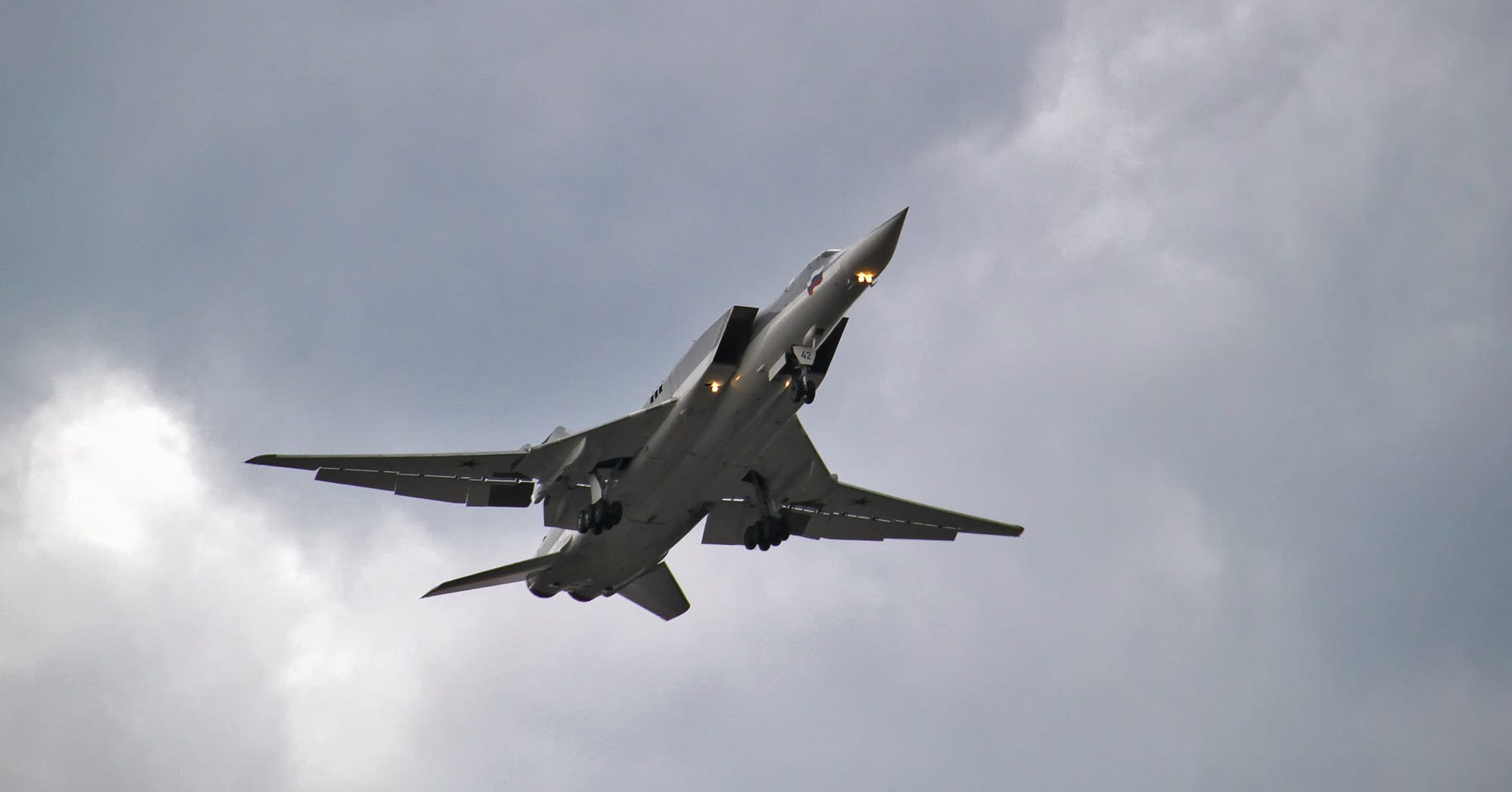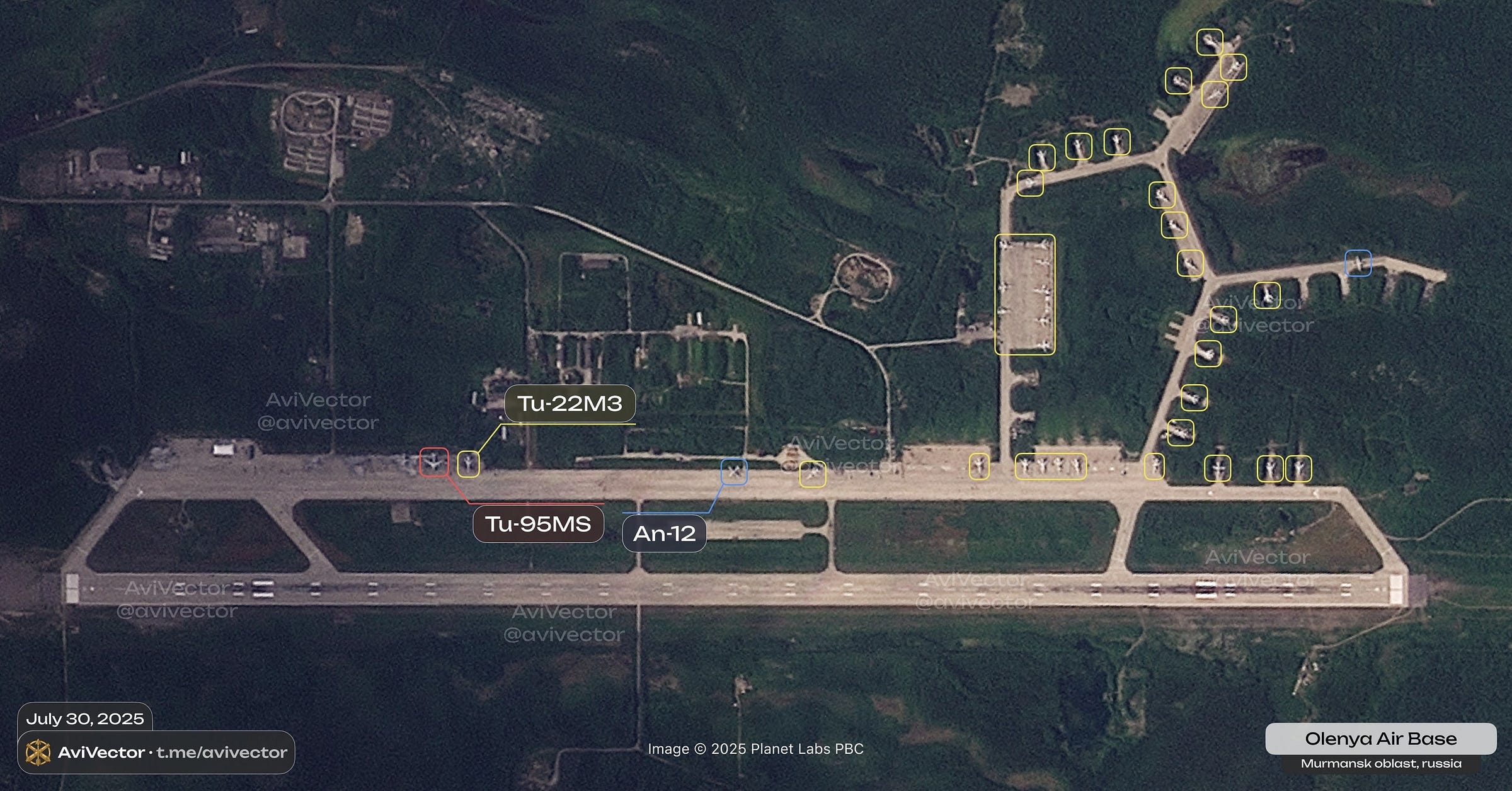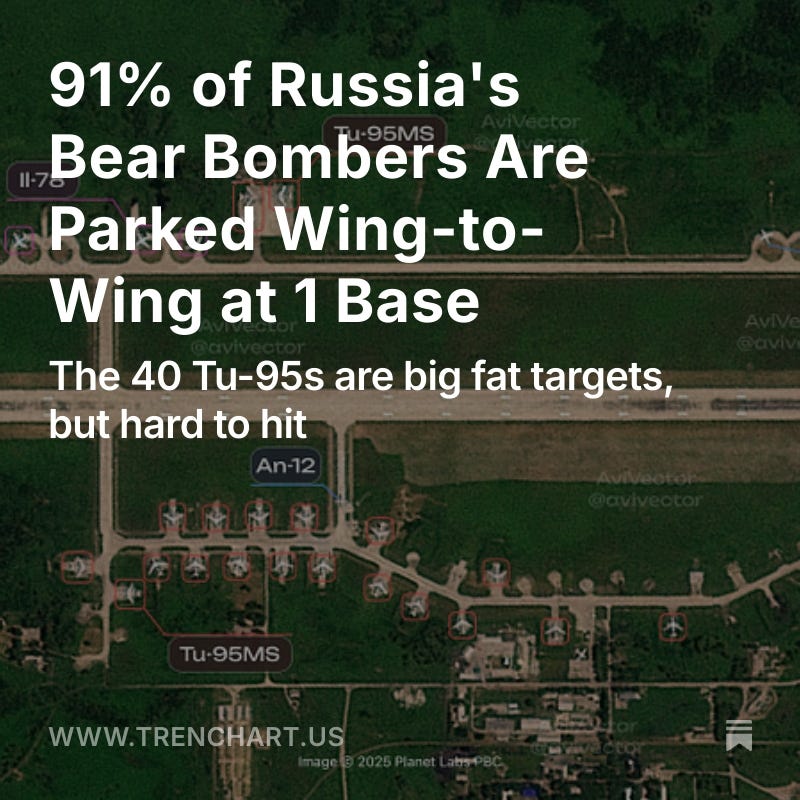Russia's 52 Backfire Bombers Are Idle. Why Aren't They Hitting Ukraine?
It's possible the Backfires are out of missiles.
Two months after the Ukrainian state security agency smuggled a thousand short-range attack drones across Russia and blew up 11 or 12 Russian air force bombers at four air bases, one of the main targets of the raid—the air force’s fleet of swing-wing, twin-jet Tupolev Tu-22M Backfire bombers—is just as vulnerable to as it was right before the June 1 raid.
The Ukrainian Operation Spider Web destroyed four Tu-22Ms and three Tupolev Tu-95 bombers at Belaya air base, 2,700 miles from Ukraine. Drones also harried Olenya air base, 1,200 miles from Ukraine, burning four or five Tu-95s but sparing the Tu-22Ms at the base.
In the weeks following the attacks, the Russian air force repositioned the remaining 44 Tu-95s as well as the undamaged fleet of 16 Tupolev Tu-160 bombers, sending the giant, jet-propelled planes to a pair of bases in Russia’s Far East, both 3,500 miles or farther from Ukraine.
The air force did not reposition the Tu-22Ms. Open-source intelligence analyst AviVector spotted 43 Backfires at Belaya on July 19. Two weeks later on July 31, there were 34 of the twin-engine, supersonic bombers at Olenya, implying the 52 active Tu-22Ms are shuttling between the two bases.
The Russians haven’t built significant new defenses at Belaya and Olenya since Operation Spider Web. The bombers are still exposed to special operations raids—and those at at Olenya may also be within range of the farthest-flying Ukrainian deep-strike drones, albeit barely.
If Russian commanders are worried about the Backfires, they’re not showing it. The minor role the Tu-22Ms have lately been playing in Russia’s 42-month wider war on Ukraine may be a factor.
The propeller-driven Tu-95s are the Russian air force’s main manned strike assets for attacks on Ukrainian cities. Most of the roughly twice-a-week raids involve at least a few Tu-95s firing Kh-101 cruise missiles. Kh-101-armed Tu-160s have recently joined in, too, clearly filling in for the Tu-95s the Ukrainians destroyed on June 1.
Idling Backfires
The Tu-22Ms are mostly idle. They joined in the city raids in February, again in May and then—most recently—four of them staged from Engels-2 air base on June 9 and flung three Kh-22 missiles at Ukraine.
The Tu-22Ms were busier earlier in the war—and their crews paid for the more intensive pace of operations. Prior to Operation Spider Web, the Russians had already lost two Backfires to drones and one to a Ukrainian S-200 long-range surface-to-air missile battery.
But according to independent analyst Tom Cooper, Russia’s stockpile of six-ton Kh-22 and similar Kh-32 missiles was essentially exhausted last year. Ukraine accelerated this depletion. On March 31, Ukrainian drones motored 140 miles into western Russia and struck the air base in Shaikovka, where Backfires once staged for Kh-22 sorties.
It’s apparent the Ukrainian drone operators meant to blow up the Kh-22s in Shaikovka. “As a result of the attack, a technical room for servicing and preparing missiles before launch was destroyed, and another was damaged by shrapnel,” the analysts at CyberBoroshno concluded after scrutinizing satellite imagery.
A storage building for Kh-22s was also hit, according to CyberBoroshno. “The result of the attack was the disabling of the airfield infrastructure, as well as the destruction of a number of missiles, which could have canceled Russia’s plans for another act of terror against civilians.”
It’s worth noting how vulnerable the Kh-22 is to shrapnel damage. “The Kh-22 has a liquid-propellant rocket engine, for which the rocket’s tanks must be filled with 3,000 liters of extremely toxic fuel, the main components of which are asymmetric heptyl and concentrated nitric acid,” Globalsecurity.org noted.
Merely carrying a 1960s-vintage Kh-22 can be dangerous. “Nothing says fun like flying around with an ancient missile containing [around] four tons of hypergolic fuel,” aviation expert Bill Sweetman quipped.
The destruction of the long-out-of-production Kh-22s was a relief to Ukrainian civilians. “These old weapons—the seeker heads of which are requiring targets with a radar cross-section of more than 1,000 square meters—have frequently caused massive civilian casualties,” Cooper noted.





Yes, it's been odd. By using them to attack Ukraine constantly ever since Spiderweb, Russia has thrown away the West’s perception of the Tu-160s as; "Don't touch them, they're strategic nuclear bombers". Previously, Tu-160s only made rare appearances in the war.
Cruise missiles aside, Defense Express pointed out last year that the TU-22 also faces major maintenance problems. Their engine was last manufactured in 1996. Its production line is long gone. Their ageing airframes can't help either. It might only take one critical part to, for example, suffer catastrophic metal fatigue and then the entire fleet is grounded. If there are no spares for that part, they stay grounded.
(https://defence-ua.com/army_and_war/skilki_u_rf_virobljajut_tu_22m3_ta_skilki_jih_zalishilos-16332.html)